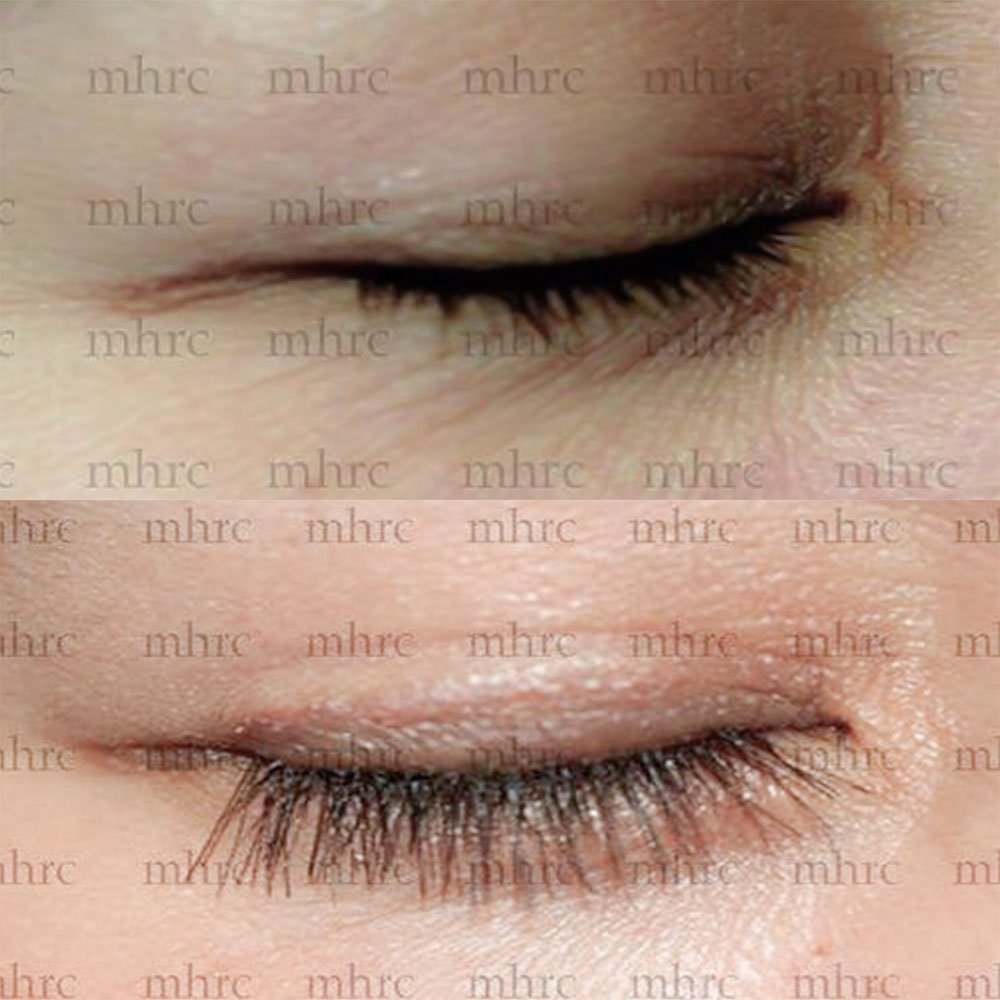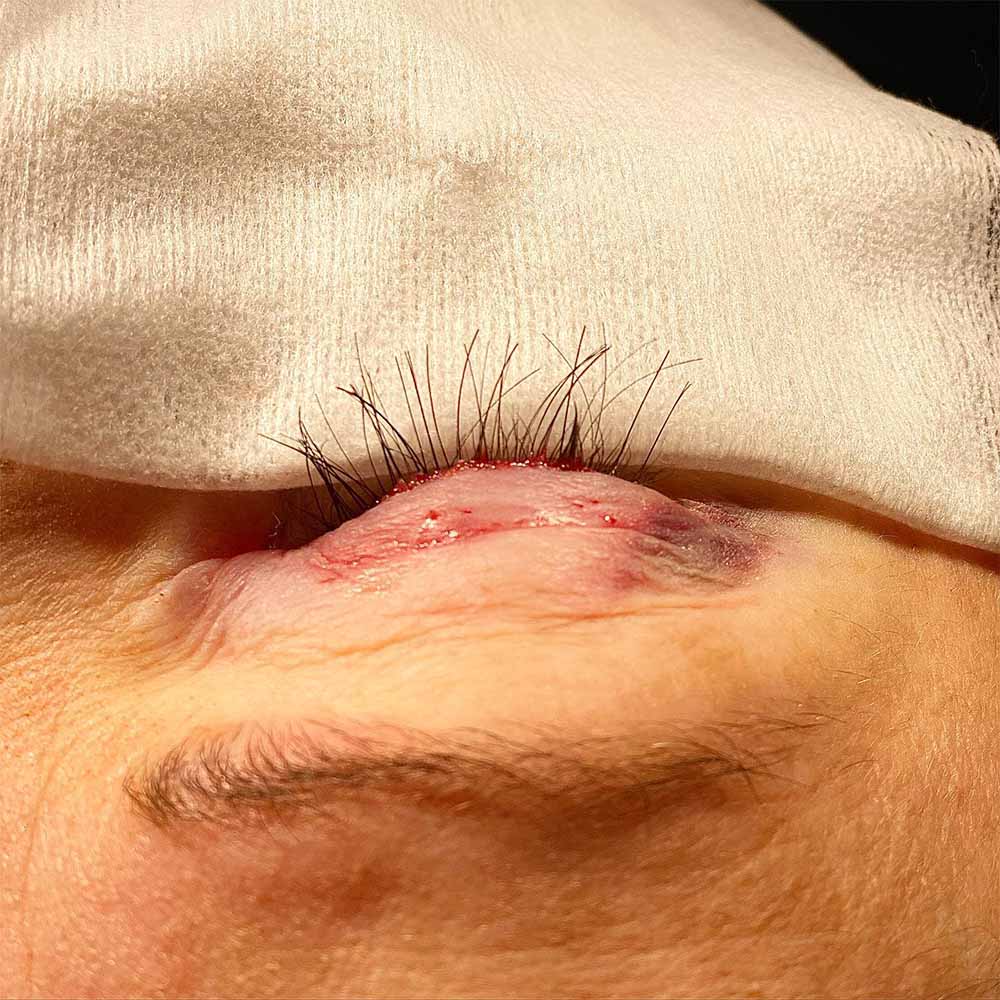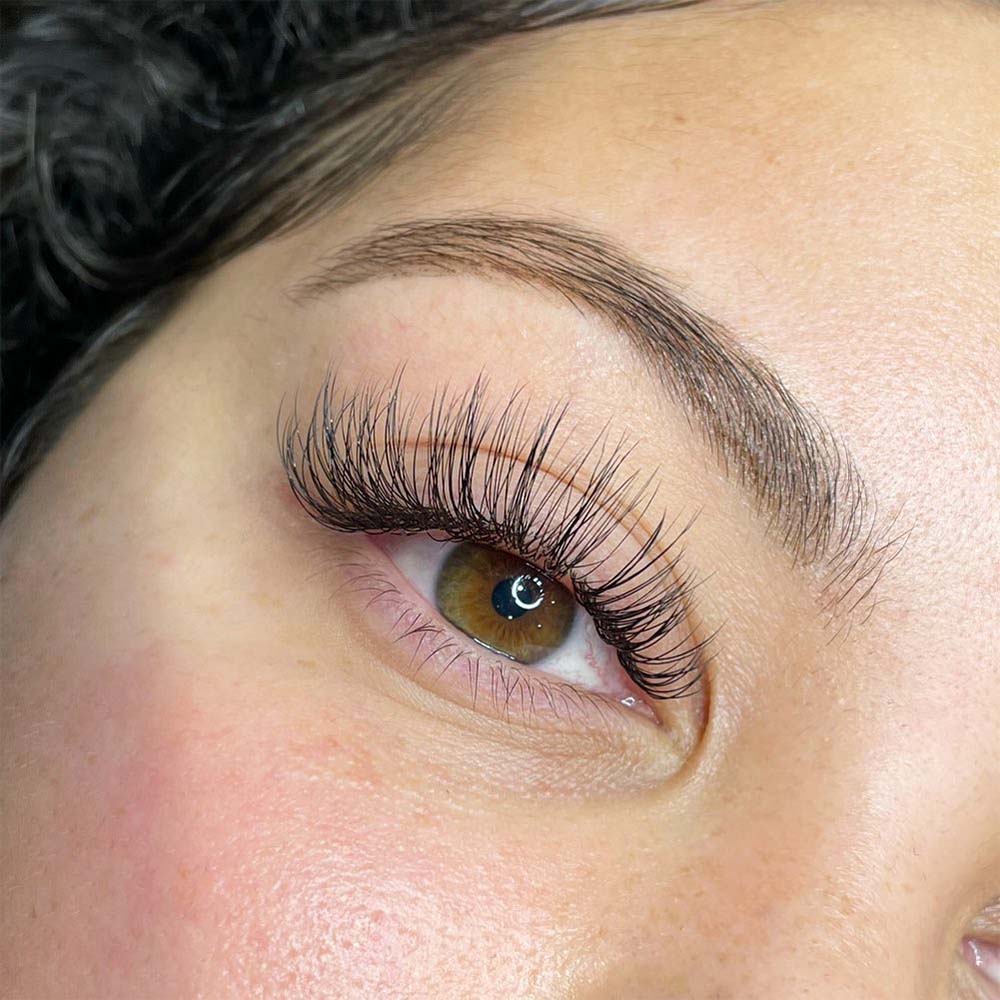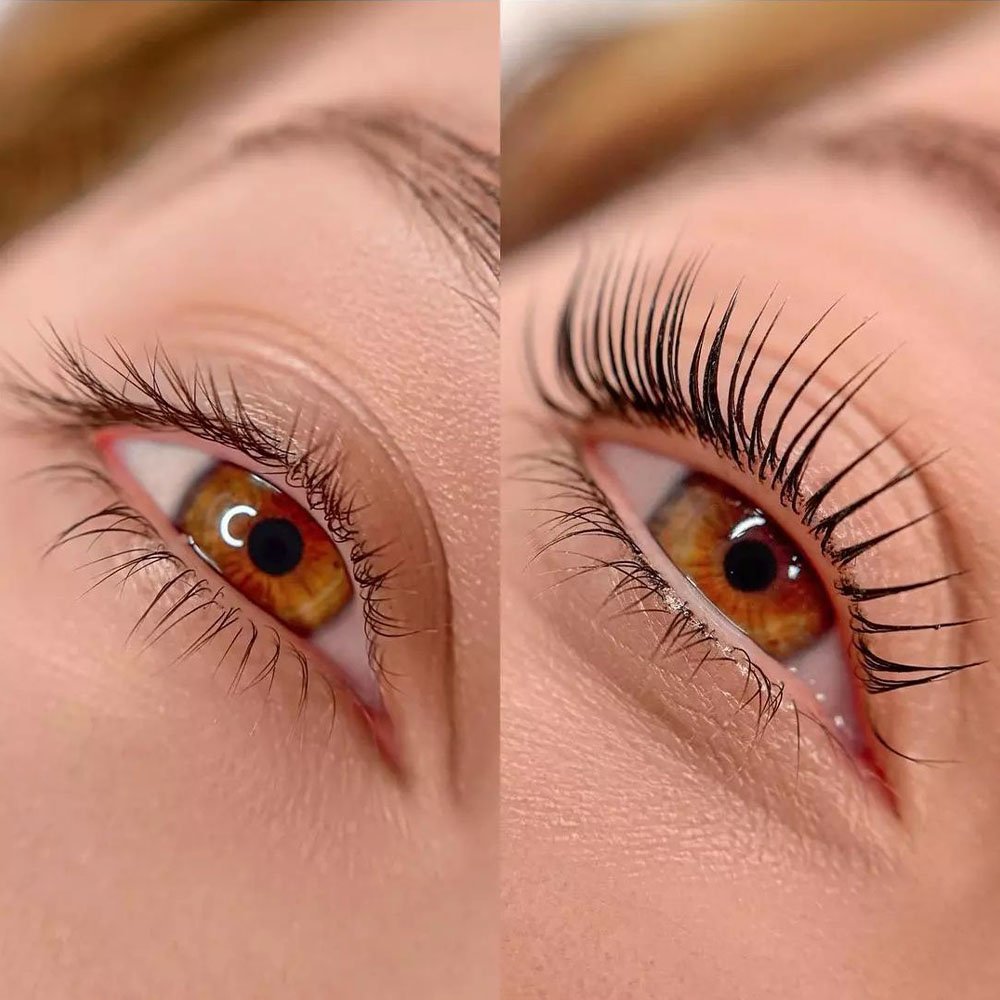Eyelash Transplant: All You Need to Know
Read all about the eyelash transplant – what the procedure looks like, what the risks are, how much it costs, and what the alternative options are.

Image source : PMUhub
In a world where beauty standards and self-expression continue to evolve, eyelashes have taken center stage as a key feature for making your eyes pop.
We can relate to the thousands (if not millions) of people who dream of having long, full, and lush eyelashes and who, unfortunately, also find that achieving this can be quite challenging.
This is where the concept of the eyelash transplant enters the picture!
In this guide, we’ll dig deep into this innovative cosmetic procedure, exploring the ins and outs of eyelash transplantation, its benefits, and the potential risks to help you decide whether this is a good option for you.
In case you’re not a fan of eyelash transplants, we’ll also cover some of the best and most popular alternative methods for enhancing your lashes, so make sure you stick around till the end!
What Is an Eyelash Transplant?
The eyelash transplant is an eyelash restoration method designed to enhance the length and density of the lashes.
The main reason people opt for this procedure is because it ensures that the new, transplanted hairs grow naturally, mimicking the behavior of your existing eyelashes.
Eyelash transplants are mostly popular among individuals with sparse or absent lashes due to genetics, trauma, or other medical conditions. The results are permanent, and they provide a long-term solution for achieving fuller, more voluminous lashes.
As with any cosmetic surgery, potential candidates should first consult with a qualified professional, either a dermatologist or ophthalmologist, to discuss expectations, potential risks, and determine if an eyelash transplant is the right choice for them.
This is because, as you may have guessed, a hair transplant on your eyelid is a pretty invasive procedure.

How Does a Lash Transplant Procedure Work?
The process of transplanting hair to the lash line involves carefully extracting small hair follicles, typically from the back of the patient’s scalp, and then delicately transplanting them onto the eyelids.
If you decide to undergo a lash transplant, here’s a step-by-step description of what you can expect from the experience:
STEP 1: Consultation. During this appointment, the surgeon will take a closer look at your natural eyelashes, discuss your expectations, and ensure that you are a suitable candidate for the procedure.
STEP 2: Preparation. Before the procedure, you will be briefed on pre-operative instructions, which may include avoiding certain medications and following specific guidelines for a comfortable and successful surgery. This will vary from person to person, so don’t be afraid to ask questions or take notes.
STEP 3: Anesthesia. On the day of the procedure, the surgeon will administer a local anesthetic to ensure your comfort during the process. Some clinics may also offer sedation options to help you relax, but this is something that should be discussed before the day of the procedure.
STEP 4: Hair follicle extraction. The surgeon carefully extracts small hair follicles, typically from the back of your scalp, although other approaches are available if this doesn’t apply to your specific case.
STEP 5: Transplantation. Using microsurgical techniques, the surgeon transplants the extracted hair follicles onto your lash line.
STEP 6: Post-operative care. After the procedure, you’ll be provided with post-operative care instructions, which we’ll get to in a later section.
STEP 7: Follow-up appointments. The point of these check-ups is to let the doctor monitor the healing process and address any concerns you may have.
Although this is a general timeline of what you can expect, it’s important to note that individual experiences will most likely vary, and you should always follow the specific instructions provided by your surgeon rather than relying heavily on online sources.
Pubic Hair Eyelash Transplant
Although not very common, a pubic hair transplant to an eyelash is sometimes done instead of taking a follicle from the back of the scalp.
Similar to traditional eyelash transplants, the process follows the same steps, including hair follicle extraction and transplantation.
Opting for pubic hair over scalp follicles in an eyelash transplant procedure is a choice often influenced by the distinct texture and thickness of pubic hair, which closely resembles natural eyelashes.
Pubic hair tends to be finer and softer, making it an ideal match for the delicate nature of eyelashes.
This unconventional choice is sometimes preferred for aesthetic reasons, given its ability to create a more subtle appearance, enhanced by the unique curvature and growth pattern of pubic hair.
What You Can Achieve with an Eyelash Hair Transplant
The main reason people opt for the eyelash hair transplant procedure is that it can be a transformative experience, especially in terms of aesthetics.
The first difference you’ll notice is an increase in your lash’s density and fullness. The results are typically very natural-looking, so the new lashes will seamlessly blend in with the existing ones, and the procedure will be unnoticeable once the eyelid fully heals.
There’s also lots of room for customization. The surgeon who does the procedure for you will ask you about the desired length, curl, and density. This means that you can choose anything between a natural, classic lash extension look and a Russian volume style of lashes.
But the biggest benefit of getting a lash transplant is that it’s permanent, meaning that you won’t have to worry about mascara ever again – of course, this is if you don’t want to enhance the lashes even further.
Eyelash Implants for Alopecia
Other than enhancing your natural lashes, a transplant of this kind can be done on those who suffer from certain conditions that hinder their hair growth, such as alopecia.
The procedure looks the same, and the benefits are also identical – mainly having to do with an aesthetic improvement. The only requirement for this procedure is that you don’t suffer from a type of condition called alopecia universalis since that would effectively mean that there are no follicles to transplant to the eyelid.
In those, although extremely rare cases, it’s possible to transplant follicles from one person to another. However, this isn’t common practice as it brings with it a slew of challenges, so it’s best to consult with a surgeon before even considering it.
Surgical Eyelash Implants – Risks
Surgical eyelash implants, like any other surgical procedure, come with potential risks and considerations. Some of the most common risks associated with lash transplants include:
- Infection – thankfully, this can be easily avoided by carefully following your post-op care instructions.
- Bleeding – surgeons take measures to control bleeding during the procedure, but excessive bleeding could occur in rare cases. If it happens after the procedure itself, consult with your doctor or surgeon about it.
- Allergic reactions – some individuals may experience allergic reactions to anesthesia, medications, or the materials used in the procedure. This risk should be discussed with the surgeon during the pre-op consultation.
- Scarring – while efforts are made to minimize scarring, the surgical process may result in visible scars. The extent of scarring can vary based on individual healing factors, or it may not even happen at all.
- Uneven results – factors like the natural growth pattern of existing lashes and individual healing responses contribute to the final outcome, but extreme asymmetry is rare.
- Eyelash loss – in some rare cases, transplanted eyelashes may not survive the procedure or may fall out during the healing process.
- Ingrown eyelashes – there is a rare possibility of transplanted eyelashes growing inward, causing irritation or discomfort, but thankfully, ingrown eyelashes don’t pose any serious health risks if treated properly and immediately.
The best way to minimize any of these risks is to ensure that your chosen surgeon is skilled and experienced in performing eyelash transplant procedures. As with any cosmetic surgery, careful consideration, realistic expectations, and open communication with the surgeon are essential for a successful outcome.
Are Eyelash Implants Permanent?
Yes, eyelash implants are a permanent solution for enhancing eyelash density.
As we said, the procedure involves transplanting hair follicles, typically from the scalp to the eyelids. Once transplanted, these hair follicles adapt to the natural growth pattern of eyelashes and continue to grow indefinitely.
Lash Implant Aftercare
As we’ve already established, proper aftercare is crucial for the success of a lash implant procedure.
Although the specific instructions will vary based on the surgeon’s recommendations and the individual’s unique situation, here are some general guidelines for lash implant aftercare:
- Avoid touching or rubbing to prevent irritation or disturbing the healing process. This includes all types of friction, so be careful when putting on a shirt, too.
- Be gentle when cleaning, avoid harsh or irritating cleansers, and use a mild, non-alcoholic solution. You can and should ask your surgeon for product recommendations.
- Don’t wear makeup for at least a week to not introduce any bacteria to the already sensitive area.
- Wear protective eyewear, especially in environments with dust, wind, or other potential irritants.
- Don’t go swimming or to saunas and hot tubs, as exposure to water and heat can impact the healing process.
- Be mindful of your sleeping position for the first few days of the healing period. It’s best to avoid sleeping directly on your face to prevent unnecessary pressure on the treated area. Of course, you shouldn’t be wearing sleeping masks, either.
- Use prescribed medication if the surgeon gives you any. They may give you oral meds or ointments to aid in the healing process and prevent infection.
- Attend your follow-up appointments to monitor the healing progress and address any concerns or questions.
- Avoid sun exposure or at least minimize it to the treated area, and consider wearing sunglasses when outdoors to protect the eyes.
- Report any issues such as signs of infection, increased redness, swelling, or other unusual symptoms.
Eyelash Transplant Cost
On average, eyelash implants cost anywhere from $3000 up.
The cost of an eyelash implant procedure varies based on several factors.
The primary factors include the location of the clinic, the expertise and reputation of the surgeon, and the specific techniques employed during the transplant.
Understandably, it may be tempting to visit another country for the procedure where you can find it for a lower price, but be very, very careful when doing so and make sure to do your research thoroughly.
Furthermore, the complexity of the individual case, the extent of eyelash loss, and the desired outcome influence the overall cost.
Additional charges may come with pre-operative evaluations, post-operative care, and any required follow-up appointments.
All in all, you probably won’t know the full price until you go to your consultation and have a professional assess your lashes, determining the best course of action.
Should You Get Eyelash Implants?
Honestly, get lash transplants only if you’re 100% sure you want to go through with the procedure.
The fact of the matter is that there are a lot of risks to a lash transplant. Sure, the benefits are compelling, but this is definitely not the only way to enhance your lash density and overall appearance.
Although it is the only permanent way, it’s also the most expensive and the most invasive one. A procedure like this one isn’t something that should be taken lightly, so take your time in weighing out all the pros and cons.
So, do your research, and if your lashes aren’t extremely sparse or damaged, it may be better to look into some alternatives.
Alternatives to Eyelash Transplants
Of course, we wouldn’t suggest you look into alternatives without giving you the best options! In this section, we’ll cover the top 3 ways to enhance your lashes that don’t come with as many warnings as lash transplants do.
Assuming you don’t want to apply falsies every single day, here are some long-lasting solutions:
Eyelash Extensions
Eyelash extensions are a popular cosmetic enhancement involving the application of synthetic or natural fibers to existing eyelashes, creating a fuller and longer lash appearance.
The procedure typically involves attaching individual extensions to each natural lash using a semi-permanent adhesive. The extensions come in various lengths, thicknesses, and styles to achieve different looks.
It’s important to note that eyelash extensions provide a temporary solution for voluminous lashes and that maintenance is required every few weeks as natural lashes shed. With proper aftercare, including avoiding oil-based products and excessive moisture, your extensions will last around 6 weeks.
While generally safe, individuals with sensitive eyes should consult with professionals before opting for this cosmetic treatment.

Lash Lift
If your goal with the transplant was just to enhance your lashes, but you don’t need to add any more density to them, then this is the best non-invasive option.
A lash lift is another popular beauty treatment that enhances the natural curl and lift of the lashes, providing a wide-eyed and more awake appearance.
This procedure involves the use of a perming solution to lift the lashes from the root, creating a lifted effect that lasts for 6 to 8 weeks.
Unlike eyelash extensions, a lash lift works with the natural lashes, eliminating the need for daily curling. The treatment is quick, painless, and very low-maintenance.

Lashline Enhancement
This treatment is a more permanent solution if your goal is to place more emphasis on your eyes.
A lash enhancement is a form of permanent eyeliner that involves the application of cosmetic pigments along the lash line to create darkness and volume.
It offers a long-lasting solution, eliminating the need for daily eyeliner application.
A huge benefit of this treatment is that permanent eyeliner can be customized in many different ways, including color, thickness, and style. This means that you can choose anything from a long & sharp wing to a subtle and barely noticeable touch of color.
While the results typically last for several years, touch-ups are required in order to maintain the vibrancy and consistency of the color.

Eyelash Transplant – Main Takeaways
If you’re considering trying out an eyelash transplant, here’s a run-down on everything you need to know before the procedure:
- It’s an innovative cosmetic procedure that enhances lash length and density,
- It’s ideal for individuals with sparse or absent lashes,
- The results are permanent,
- They mimic natural growth patterns,
- The procedure includes a consultation, hair follicle extraction, transplantation, and post-operative care,
- Potential risks include infection, bleeding, allergic reactions, scarring, uneven results, lash loss, and ingrown eyelashes,
- Aftercare is crucial for a successful outcome,
- Popular alternatives include eyelash extensions, the lash lift, and permanent eyeliner.
weekly insight into PMU insdustry
Subscribe to our FREE newsletter. 100% good stuff.

support us so we can keep providing you with free education , information and inspiration.
